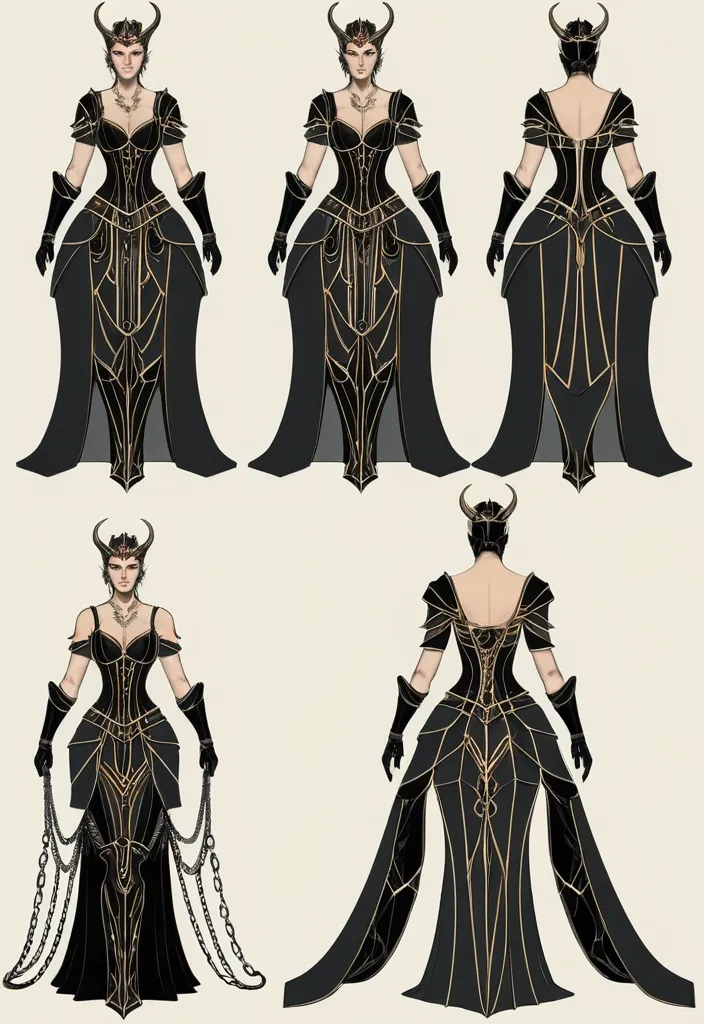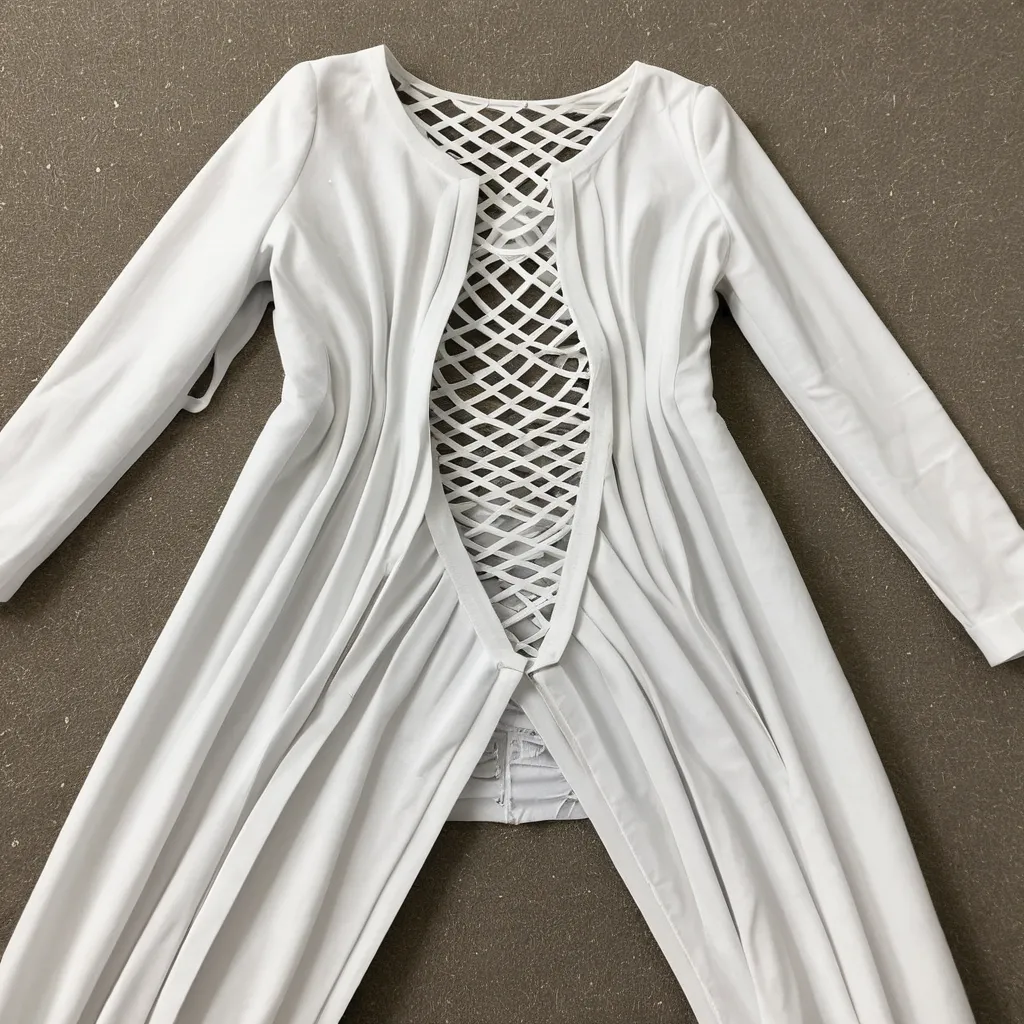Search Results for cut
Explore AI generated designs, images, art and prompts by top community artists and designers.

A solitary lighthouse mermaid stands on a rocky outcrop , rendered entirely as a vortex dress made of thousands of razor-sharp glass shards meticulously arranged in intricate hexagonal circuit patterns , silhouetted against a swirling nebula sky. The lighthouse beam cuts through a dense , ethereal fog , illuminating ancient , moss-covered ruins on the shore. The scene is rendered with hyper-realistic detail , capturing the textures of stone and water , with a dark fantasy aesthetic evoking the mood of a forgotten myth. Style of Zdzisław Beksiński and H.R. Giger , cinematic lighting , dramatic atmosphere. ,

Concept art sheet , three full-body variations of the same character in one image. A horned centauress aristocrat , elegant and predatory , noble fantasy design. Cold , confident expression , noble posture , high-status aura. Each variation shows a different outfit design: Variation 1: Open structured corset with side cut-outs and a subtle underbust opening , rigid elegant armor-like shape. Back design features decorative chains forming a geometric pattern across the back , attached to a high ornate belt. Variation 2: Very open corset with minimal front coverage , emphasizing torso and waist , no cleavage but strong silhouette. Back is highly decorative with crossed straps and long flowing fabric panels cascading down from the upper back , aristocratic drapery. Variation 3: Moderately open V-shaped ,

A cinematic aerial , top-down view of Ahmedabad city sky during the Kite Flying Festival. The wide on terrace spreads below in graceful geometry , with clusters of local families and children arranged across the on terrace , their movements forming flowing patterns when seen from above. From this elevated perspective , hundreds of Ahmedabad kites and traditional Japanese kites rise into a dramatic , cloud-filled sky , their fine strings subtly visible , visually linking earth and sky. Gujarati kites appear sharp , agile , and dynamic , scattered with rhythmic energy , while Hamamatsu Japanese kites dominate in scale—larger forms carrying bold calligraphy and symbolic motifs that read clearly even from a distance. Layers of soft grey and blue clouds drift slowly , creating cinematic depth and atmospheric motion , while bursts of vivid colour from the kites cut through the muted sky. skyscraper buildings , Sabarmati riverfront , trees , and open lawns remain clearly legible below , reinforcing openness , learning , and community. The mood feels expansive , harmonious , and poetic—celebrating tradition , youth , and cross-cultural exchange from a bird’s-eye perspective. Vivid watercolour illustration style with expressive brushwork , layered washes , rich pigment textures , soft edges , subtle light falloff , wide-angle cinematic aerial composition , high detail , museum-quality finish. ,

A cinematic aerial , top-down view of Ahmedabad city sky during the Kite Flying Festival. The wide on terrace spreads below in graceful geometry , with clusters of local families and children arranged across the on terrace , their movements forming flowing patterns when seen from above. From this elevated perspective , hundreds of Ahmedabad kites and traditional Japanese kites rise into a dramatic , cloud-filled sky , their fine strings subtly visible , visually linking earth and sky. Gujarati kites appear sharp , agile , and dynamic , scattered with rhythmic energy , while Hamamatsu Japanese kites dominate in scale—larger forms carrying bold calligraphy and symbolic motifs that read clearly even from a distance. Layers of soft grey and blue clouds drift slowly , creating cinematic depth and atmospheric motion , while bursts of vivid colour from the kites cut through the muted sky. skyscraper buildings , Sabarmati riverfront , trees , and open lawns remain clearly legible below , reinforcing openness , learning , and community. The mood feels expansive , harmonious , and poetic—celebrating tradition , youth , and cross-cultural exchange from a bird’s-eye perspective. Vivid watercolour illustration style with expressive brushwork , layered washes , rich pigment textures , soft edges , subtle light falloff , wide-angle cinematic aerial composition , high detail , museum-quality finish. ,

A cinematic aerial , top-down view of Ahmedabad city sky during the Kite Flying Festival. The wide open school मैदान spreads below in graceful geometry , with clusters of local families and school children arranged across the grounds , their movements forming flowing patterns when seen from above. From this elevated perspective , hundreds of Ahmedabad kites and traditional Japanese kites rise into a dramatic , cloud-filled sky , their fine strings subtly visible , visually linking earth and sky. Gujarati kites appear sharp , agile , and dynamic , scattered with rhythmic energy , while Hamamatsu Japanese kites dominate in scale—larger forms carrying bold calligraphy and symbolic motifs that read clearly even from a distance. Layers of soft grey and blue clouds drift slowly , creating cinematic depth and atmospheric motion , while bursts of vivid colour from the kites cut through the muted sky. Kite Hotel buildings , Sabarmati riverfront , trees , and open lawns remain clearly legible below , reinforcing openness , learning , and community. The mood feels expansive , harmonious , and poetic—celebrating tradition , youth , and cross-cultural exchange from a bird’s-eye perspective. Vivid watercolour illustration style with expressive brushwork , layered washes , rich pigment textures , soft edges , subtle light falloff , wide-angle cinematic aerial composition , high detail , museum-quality finish. ,

Aerial perspective , top-down view of dancer in dynamic motion , rendered entirely as a vortex Moroccan traditional dress , floating hair , cosmic eye , pale skin , looking up , cute pose. BREAK. crystal clear bubbles (shining prism , in the sky) , beautiful universe , (photo-realistic huge beautiful colorful aurora:1.2) , high color saturation , ground (made of water , reflecting aurora) , many colorful (realistic crystal snowflakes:1.2) blooming everywhere , (shiny wind flow) , stars sparkle , from below , dynamic angle , BREAK. quality , masterpiece , high score , great score , very aesthetic , high resolution , ultra-detailed , absurdness , newest , scenery , depth of field , fairy-tale , dreamlike. ,

A dancer in dynamic motion , rendered entirely as a vortex gown , floating hair , cosmic eye , pale skin , looking up , cute pose. BREAK. crystal clear bubbles (shining prism , in the sky) , beautiful universe , (photo-realistic huge beautiful colorful aurora:1.2) , high color saturation , ground (made of water , reflecting aurora) , many colorful (realistic crystal flowers:1.2) blooming everywhere , (shiny wind flow) , stars sparkle , from below , dynamic angle. (fish-eye lens:1.2). BREAK .quality , (masterpiece , high score , great score , very aesthetic , high resolution , ultra-detailed , absurdres , newest , scenery , depth of field , fairytale , dreamlike) ,

An intricately detailed cutaway illustration of a colossal apple logo , revealing a cylindrical world that spirals around its inner surface. Apples meticulously depicted , showcasing the architectural brilliance and seamless integration of nature. Sunlight filters through a central axis. Style: Celestial , ethereal , abstract , digital art Lighting: Dramatic backlighting , bright glowing particles , contrasting dark background Composition: dynamic diagonal , composition , upward gaze Details: Sparkling white waves and smoke , streaking white light trails , sense of movement and wonder , magical atmosphere Quality: High detail , 4K , Masterpiece , Rendered in Octane. ,

A hyperrealistic bedroom with expansive , bright windows enhancing the room's luminosity. The design emphasizes well-executed , cost-effective repairs , avoiding extravagance. The furniture , especially the central bed with two sharply defined bedside tables , stands out. Decorative features like the sconces on the bedside tables are prominently visible. ,

**"A celestial woman with flowing crystalline hair stands amidst a frozen dreamscape , her entire body sculpted from translucent diamond latticework that refracts light into prismatic rainbows. Each strand of her waist-length hair glows with internal fractals , moving like liquid glass in an unfelt wind. Her piercing diamond eyes contain swirling galaxies , pupils shaped like perfect cut gemstones that shift color with her emotions. She wears a gown of frozen starlight—a translucent , ice-like fabric that floats around her body in impossible gravity-defying folds , revealing subtle veins of glowing azure energy beneath its surface.** **The environment amplifies her ethereal presence:** - **Microscopic ice crystals** suspended around her form delicate halos of light - **Subsurface scattering** makes her skin glow from within , revealing intricate crystal structures - **HDR enhancement** captures every spectral highlight and shadow in hyperreal detail - **16K resolution** reveals individual geometric facets in her diamond fingertips - **Background auroras** cast ever-changing colors across her flawless form **Mood:** Otherworldly elegance meets frozen perfection—a being of impossible beauty carved from the heart of a dying star. **Style:** **Hyper-realistic digital fantasy** blending **sci-fi material science** with **romantic ethereal aesthetics**. Rendered with **ray-traced refraction** and **volumetric caustics** for photorealistic light interaction across her crystalline form." This version maintains your core vision while adding: 1. Stronger environmental storytelling 2. Advanced material/texture details 3. Cinematic lighting techniques 4. Technical rendering specifications 5. Emotional atmosphere The result should be a breathtaking image that pushes the boundaries of fantasy realism.ar-9:16 ,

A color-psychedelic collage depicting an Angry Bird (a Finnish video game series and media franchise created by Jaakko Iisalo and owned by Rovio Entertainment) , dreamlike landscape composed of snow and white and other optical illusion patterns , surreal organic , Bird-face-like lifeforms and biomorphic structures , layered and arranged as if cut , assembled , and recomposed from multiple surreal realities. The scene feels like a collaged ecosystem built from perception itself — Bird face embedded in plants , Bird floating independently , Birds growing on stalks , cones , mushrooms , and soft sculptural forms. Some Birds are realistic and detailed , others simplified , graphic , striped , or abstracted. A voluptuous milf , wearing a Christmas costume with a xmas cap and playing a guitar. Elements overlap unnaturally , with intentional scale mismatches and layered planes that flatten and re-expand space. ,

folk embroidery style , traditional vibrant floral pattern , dense symmetrical composition , balanced distribution of overlapping various-sized floral elements , large red blooms , orange flower clusters , yellow floral accents , white flowers with red centers , blue flowers with white centers , pink ruffled petals , green leaves and stems , intricate floral motifs , dark black background , high color contrast , bold bright colors , textured embroidered appearance , full coverage design , folk art aesthetic , layered and arranged as if cut , assembled , and recomposed from multiple surreal realities. The scene feels like a collage ecosystem built from perception itself. A voluptuous milf , wearing a Christmas costume with a xmas cap and playing a guitar. Elements overlap unnaturally , with intentional scale mismatches and layered planes that flatten and re-expand space. ,

A color-xerox-looking psychedelic collage depicting an alien , dreamlike landscape composed of black and white and other optical illusion patterns , surreal organic , eye-like lifeforms and biomorphic structures , layered and arranged as if cut , assembled , and recomposed from multiple surreal realities. The scene feels like a collaged ecosystem built from perception itself — eyes embedded in plants , eyes floating independently , eyes growing on stalks , cones , mushrooms , and soft sculptural forms. Some eyes are realistic and detailed , others simplified , graphic , striped , or abstracted. A 1970 USA California a mature woman , wearing a colorful hippie dress with a flower wreath in her hair and playing a guitar. Elements overlap unnaturally , with intentional scale mismatches and layered planes that flatten and re-expand space. ,

A color-xerox-looking psychedelic collage depicting an alien , dreamlike landscape composed of black and white and other optical illusion patterns , surreal organic , eye-like lifeforms and biomorphic structures , layered and arranged as if cut , assembled , and recomposed from multiple surreal realities. The scene feels like a collaged ecosystem built from perception itself — eyes embedded in plants , eyes floating independently , eyes growing on stalks , cones , mushrooms , and soft sculptural forms. Some eyes are realistic and detailed , others simplified , graphic , striped , or abstracted. A slim Caucasian female with long wild thick curly hot pink I hair wonders through with a confused and worried facial expression. Her avant garde clothing features all over black and white optical illusion patterns. The terrain is smooth and velvety , with optical-illusion patterns — concentric rings , ripples , spirals , and flowing stripes — collaged into the ground and background , subtly disrupting depth and orientation. Elements overlap unnaturally , with intentional scale mismatches and layered planes that flatten and re-expand space. Color palette is highly saturated , candy-acid , and psychedelic: dominant hot pinks and magentas , with purples , lilacs , teals , cyan , electric blue , and stark black-and-white contrast patterns. Surfaces appear soft , plush , and matte with a faint internal glow. Lighting is even and surreal , minimizing realistic shadows and emphasizing color and form. The mood is whimsical , hypnotic , and mildly uncanny — playful cosmic strangeness rather than horror. The collage composition creates visual rhythm through repetition of shapes , eyes , and patterns , with no single focal point , encouraging the viewer’s gaze to wander and become lost. Overall style is psychedelic surrealism , alien botanical collage , dream-logic sci-fi , blending cute and unsettling. No clear narrative or characters — just the sensation of being totally lost inside a psychedelic collage world where vision , pattern , and landscape have fused. ,

Inspired by leaf-cutout art , depict Statue of Unity is the world's tallest statue , located at bank of Narmada river , near Kevadia , Gujarat , carved into a single complete banyan leaf. Architectural forms , terrain , and symbolic elements emerge through organic hollow cutouts , seamlessly connected by natural vein structures. The leaf surface glistens with dew under soft sunlight , creating subtle depth and contrast. Background remains a softly blurred natural setting with harmonious bokeh. Cinematic macro perspective , botanical realism , ultra-detailed. ,

À giant muscular chubby most busty femalebodybuilder , housewife woman BBW musclée , heavy weight bodybuildeuse géante et plantureuse with giant chest , imposante dame massive , beautiful make up Elisha Cuthbert face , in a police station office , avec de gros seins , énormes biceps musclés , in red laces transparent very short mini loose nightgown with heels , exposant les seins , bras musclés exposés , dominante , jambes massives exposées , agressive , ,

A Futuristic Holographic Projection of a Lion , with glowing lines and translucent layers. Employ a duotone color palette of electric blue and neon orange to create a cutting-edge. Style: Celestial , ethereal , abstract , digital art smoking: Dramatic backlighting , bright glowing particles , contrasting dark background Composition: dynamic diagonal composition , upward gaze Details: Sparkling white waves and smoke , streaking white light trails , sense of movement and wonder , magical atmosphere Quality: High detail , 4K , Masterpiece , Rendered in Octane. ,

Shot with panorama lens. A surreal Melting from a 3D Maze cylinder , Vertigo Art style , lone women explorer stands on the edge of a stone caves , gazing down at a sprawling caves ancient are numbered from right to left , except for the later discovered cave 29 , located high above Cave 21 of the Under-dark below , now partially reconstructed and overgrown with vibrant , alien trees. The Ajanta Caves panorama , rock-cut Buddhist cave monuments dating from the second century BCE to about 480 CE in Aurangabad district of Maharashtra state in India , Also , cave 30 is located between caves 15 and 16 , nearer the river bed (cave invisible here). Chaitanya halls are boxed , and minor caves are indicated by a smaller type. The low roofs of the cave ceiling shut out any life from the waterfall above , creating a sense of imbalance and disorientation. ,

Creates a realistic Terminator-style portrait. Upload your photo and paste the prompt below. A more cinematic version , while Seedream is closer to realism and more accurately draws a portrait from a photo.Create a photo-realistic color portrait in a 4:3 vertical aspect ratio. I am wearing a military dress. The left side of my body remains human , while the right side (face neck upper torso under the shirt) is visible as a metallic cybernetic endoskeleton with mechanical parts and a glowing red robotic eye. The transition between skin and metal should appear realistic , with natural-looking scorched edges , slightly cracked fabric , subtle dried blood , and signs of battle damage (not a straight cut line). In backdrop a flowing , Giant Hulk , snarling under a sprawling , star-filled night sky , Glowing eyes , muscular , silhouette emerges from a mass of swirling. The Hulk is composed entirely of soft , fluid streaks that blend into one another: luminous white and pale gray at the head and shoulders , shifting into bright cyan. The head tilts gently downward , defined only by subtle curves and shadows formed by the color transitions. Cinematic dramatic lighting , dark , moody background , hyper-realistic sci-fi aesthetics of film quality , natural skin pores , no cartoons or illustrations , crisp 4K resolution. ,

Creates a realistic Terminator-style portrait. Upload your photo and paste the prompt below. A more cinematic version , while Seedream is closer to realism and more accurately draws a portrait from a photo.Create a photo-realistic color portrait in a 4:3 vertical aspect ratio. I am wearing a military dress. The left side of my body remains human , while the right side (face neck upper torso under the shirt) is visible as a metallic cybernetic endoskeleton with mechanical parts and a glowing red robotic eye. The transition between skin and metal should appear realistic , with natural-looking scorched edges , slightly cracked fabric , subtle dried blood , and signs of battle damage (not a straight cut line). In backdrop a flowing , Giant Hulk , snarling under a sprawling , star-filled night sky , Glowing eyes , muscular , silhouette emerges from a mass of swirling. The Hulk is composed entirely of soft , fluid streaks that blend into one another: luminous white and pale gray at the head and shoulders , shifting into bright cyan. The head tilts gently downward , defined only by subtle curves and shadows formed by the color transitions. Cinematic dramatic lighting , dark , moody background , hyper-realistic sci-fi aesthetics of film quality , natural skin pores , no cartoons or illustrations , crisp 4K resolution. ,

Creates a realistic Terminator-style portrait. Upload your photo and paste the prompt below. A more cinematic version , while Seedream is closer to realism and more accurately draws a portrait from a photo.Create a photo-realistic color portrait in a 4:3 vertical aspect ratio. I am wearing a military dress. The left side of my body remains human , while the right side (face neck upper torso under the shirt) is visible as a metallic cybernetic endoskeleton with mechanical parts and a glowing red robotic eye. The transition between skin and metal should appear realistic , with natural-looking scorched edges , slightly cracked fabric , subtle dried blood , and signs of battle damage (not a straight cut line). In backdrop a flowing , Giant Hulk , snarling under a sprawling , star-filled night sky , Glowing eyes , muscular , silhouette emerges from a mass of swirling. The Hulk is composed entirely of soft , fluid streaks that blend into one another: luminous white and pale gray at the head and shoulders , shifting into bright cyan. The head tilts gently downward , defined only by subtle curves and shadows formed by the color transitions. Cinematic dramatic lighting , dark , moody background , hyper-realistic sci-fi aesthetics of film quality , natural skin pores , no cartoons or illustrations , crisp 4K resolution. ,

A detailed fantastic futuristic image of a south Indian mature woman with a beautiful appearance and glossy skin teleports in a stream of highly vibrational energy. Face/skin: glossy porcelain , mirrored highlights on cheeks , nose and forehead , soft smile. Eyes: lilac , glossy sheen in the eyes. Hair: fashionable dark brown and long hair , with shiny tips , shiny. Lips: with an ultra-moist sheen. futuristic traditional saree made of lemon matte material with an asymmetrical cut and cutouts , with glitter. Background: white , with an iridescent sheen . Lighting: professional bright , rainbow highlights. 85 mm. Textures: shiny vinyl skin with pore texture , shiny hair. ,

20s ish human monkHis eyes Are Green iridescent , like a June bug. Dark long eyelashes and a natural winged eyeliner His hair is a soft golden honey brown with heavy wavy locks that he keeps cut currently into a Mohawk.His skin is a dark olive Mediterranean tone.6’2” , 175 , very trim but pronounced muscles like an Olympic swimmer.Even though he has striking features like a strong jawline and high cheek bones , He wears silk monk robes in the burnt orange with blue with floral burnt orange silk liner that shows on his lapel , collar , arm holes , and leggings. He wears a yellow silk belt with a wood beaded rope that is actually a whip , pouches , and ordimental jewelry of his monastery and from his family; such as earrings , necklaces , bracelets , ankle bracelets , and rings ,

20s ish human monk His eyes Are Green iridescent , like a June bug. Dark long eyelashes and a natural winged eyeliner His hair is a soft golden honey brown with heavy wavy locks that he keeps cut currently into a Mohawk. His skin is a dark olive Mediterranean tone. 6’2” , 175 , very trim but pronounced muscles like an Olympic swimmer. Even though he has striking features like a strong jawline and high cheek bones , He wears silk monk robes in the burnt orange with blue with floral burnt orange silk liner that shows on his lapel , collar , arm holes , and leggings. He wears a yellow silk belt with a wood beaded rope that is actually a whip , pouches , and ordimental jewelry of his monastery and from his family; such as earrings , necklaces , bracelets , ankle bracelets , and rings ,

Bird's eye view of sea wildlife with an giant eagle ray-fish forming a body-shaped cutout within a gentle pasture. A woman in a red dress is drowning , reaching upward while lying horizontally underwater , far in the background. Chains extend from her ankles toward the bottom. The surrounding underwater ocean waves landscape has soft waves merging into facial forms. Style is poetic surrealism with limited drops of water and warm grey and amber light. ,




